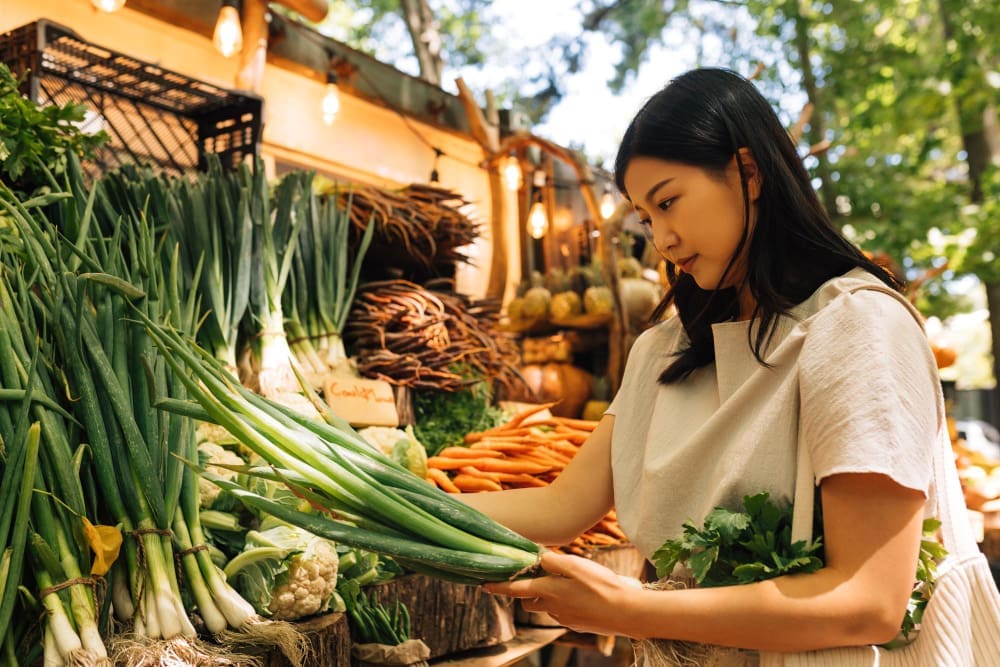For any traveler seeking the true pulse of a city, the best place to find it is in its food markets. Across Asia, these bustling hubs are where locals shop, eat, and socialize, offering a vibrant, unfiltered glimpse into daily life. From the sprawling night bazaars of Taipei to the pristine seafood halls of Tokyo, these markets are essential destinations for any culinary adventurer looking to taste the authentic flavors of the continent. They are chaotic, colorful, and utterly captivating, serving as living museums of culture and cuisine where the price of admission is simply an empty stomach and an open mind.
The Soul of the City: Why Asian Food Markets Are Essential
To understand Asia, you must understand its relationship with food. Markets are not just commercial venues; they are the epicenters of community life. They are where traditions are passed down through generations, showcased in the form of a perfectly folded dumpling, a fragrant bowl of noodles, or a meticulously grilled skewer.
Visiting these markets offers a multi-sensory experience that no restaurant can replicate. You’ll hear the rhythmic clang of a wok, the sizzle of oil hitting a hot griddle, and the cheerful haggling between vendors and customers. You’ll smell the intoxicating aromas of lemongrass, star anise, grilled meats, and sweet pastries, all mingling in the air. For a traveler, this is the most direct and delicious way to connect with a destination.
Thailand: Land of Aromatic Wonders
Thailand’s markets are legendary, offering an explosion of sweet, sour, salty, and spicy flavors that define the country’s cuisine. From pristine indoor halls to chaotic outdoor affairs, there is a market for every type of food lover.
Or Tor Kor Market, Bangkok
Often ranked among the world’s best fresh markets, Or Tor Kor is the sophisticated cousin to Bangkok’s more frenetic options. It is exceptionally clean, well-organized, and showcases some of the highest-quality produce, seafood, and prepared foods in Thailand. While it’s a place where chefs and discerning home cooks shop for premium ingredients, it also features a spectacular food court.
Here, you can sample pristine versions of Thai classics, from rich Massaman curry to succulent grilled river prawns and perfectly sweet mango sticky rice. Don’t miss the stalls selling exotic fruits like mangosteen and durian, all presented with artistic care. It’s a perfect introduction to Thai flavors without the overwhelming chaos of other markets.
Chatuchak Weekend Market, Bangkok
While primarily known as one of the world’s largest outdoor shopping markets, Chatuchak is also a food paradise. With over 15,000 stalls, a significant portion is dedicated to food and drink. Navigating its labyrinthine alleys, or sois, is part of the adventure.
You can find almost any Thai street food imaginable here. Must-try items include the famous coconut ice cream served in a coconut shell, savory grilled honey-roast pork (moo yang), and refreshing pomegranate juice. For a break from the heat, duck into one of the small restaurants scattered throughout for a delicious bowl of boat noodles or a spicy papaya salad.
Japan: Precision and Perfection
Japanese food markets are a testament to the nation’s obsession with quality, seasonality, and presentation. They are temples of gastronomy where you can witness the deep respect for ingredients that underpins Japanese cuisine.
Tsukiji Outer Market, Tokyo
While the famous inner wholesale tuna auction moved to the new Toyosu Market in 2018, the Tsukiji Outer Market remains a vibrant and essential destination for food lovers. This bustling network of streets is packed with small restaurants, food stalls, and vendors selling everything from fresh seafood and kitchen knives to dried bonito flakes and premium seaweed.
The main draw is the incredible array of street food. You can feast on incredibly fresh sashimi and sushi, grilled scallops topped with uni (sea urchin), and the iconic sweet and savory rolled omelet known as tamagoyaki. Arrive early to experience the market at its liveliest and be prepared to queue for the most popular stalls—it’s always worth the wait.
Nishiki Market, Kyoto
Known as “Kyoto’s Kitchen,” Nishiki Market is a narrow, five-block-long shopping street lined with more than one hundred shops and restaurants. This 400-year-old market specializes in ingredients central to Kyoto’s refined cuisine, such as Japanese pickles (tsukemono), fresh tofu, and high-quality matcha.
Many stalls offer free samples, making a walk through Nishiki a tasting tour in itself. Look for tako tamago (a candied baby octopus with a quail egg in its head), freshly made mochi, and skewers of grilled eel. It’s an ideal place to understand the building blocks of traditional Japanese cooking.
South Korea: A Symphony of Spice and Soul
Korean markets are loud, joyful, and full of hearty, comforting food. They are places of immense character, where friendly vendors, known as ajummas, serve up dishes perfected over decades.
Gwangjang Market, Seoul
As one of the oldest and largest traditional markets in South Korea, Gwangjang is a non-negotiable stop for any visitor to Seoul. The heart of the market is its central food alley, a chaotic and wonderful jumble of stalls, steam, and hungry patrons sitting shoulder-to-shoulder on wooden benches.
Two dishes reign supreme here: bindaetteok and mayak gimbap. Bindaetteok are savory, crispy pancakes made from ground mung beans, pork, and vegetables, fried to golden perfection. Mayak gimbap, or “narcotic” seaweed rolls, are addictively delicious mini rolls served with a tangy mustard dipping sauce. Pair it all with a bottle of makgeolli (milky rice wine) for the full experience.
Taiwan: The Undisputed King of Night Markets
In Taiwan, night markets are a way of life. When the sun sets, streets across the island transform into bustling food carnivals, offering an endless variety of delicious and affordable snacks, known as xiaochi.
Shilin Night Market, Taipei
Shilin is Taipei’s largest and most famous night market, a sprawling maze of food stalls and shops that attracts hordes of locals and tourists alike. While its size can be intimidating, the sheer variety is astounding. The market is split between an open-air section and a modern, underground food court.
Must-try dishes include the giant fried chicken cutlet (hao da ji pai), oyster omelets, pepper buns (hujiao bing) baked in a tandoor-like oven, and the infamous stinky tofu. For dessert, a bowl of shaved ice topped with fresh mango and condensed milk is the perfect way to cool down.
Raohe Night Market, Taipei
For a slightly more manageable but equally delicious experience, head to Raohe Night Market. It is essentially one long street, making it easy to navigate. The ornate temple at its entrance marks the beginning of a culinary journey.
Raohe is particularly famous for its black pepper pork buns (hujiao bing), which you’ll find at a stall with a perpetually long line right at the entrance. Other highlights include flame-torched beef cubes, herbal pork rib soup, and grilled squid. The focused layout makes it a great choice for a first-time night market visitor.
Singapore: A Melting Pot of Flavors
Singapore’s version of the food market is the hawker centre. These open-air food courts are the bedrock of the nation’s food culture, offering a staggering diversity of high-quality, affordable dishes from Chinese, Malay, Indian, and Peranakan traditions.
Maxwell Food Centre
Located in Chinatown, Maxwell is one of Singapore’s most beloved hawker centres. It is home to over 100 stalls, including some that have gained international acclaim. This is the place to try some of the country’s most iconic dishes.
The most famous stall is Tian Tian Hainanese Chicken Rice, which earned a Michelin Bib Gourmand and was praised by the late Anthony Bourdain. Other essentials include savory fried carrot cake (which contains no carrot), nourishing fish soup, and the hearty rice porridge known as congee.
A Traveler’s Guide to Navigating the Markets
To make the most of your culinary adventure, keep a few key tips in mind. First and foremost, come with an empty stomach and an open mind. The best approach is to graze, trying small portions from several different stalls rather than filling up at one.
Next, cash is king. While some modern markets may accept cards, the vast majority of smaller stalls operate on a cash-only basis. Having small bills will make transactions smoother and is appreciated by vendors.
When in doubt, follow the locals. A long queue of residents is the surest sign of quality and authenticity. Don’t be afraid to point at what you want if there’s a language barrier; a smile and a gesture go a long way.
Finally, wear comfortable shoes. You will be doing a lot of walking and standing. Be prepared for crowds, noise, and a bit of sensory overload—it’s all part of the unforgettable experience.
Ultimately, a visit to an Asian food market is more than just a meal; it’s a deep dive into the heart and soul of a destination. It’s where you’ll find the most authentic flavors, the warmest hospitality, and the most lasting travel memories. So, on your next trip to Asia, make sure to put these incredible culinary institutions at the very top of your itinerary.








